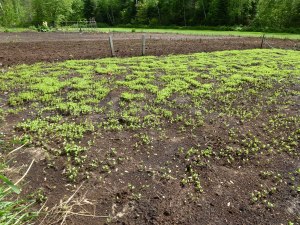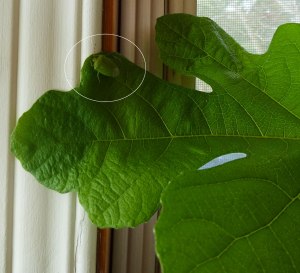March 13:
Cotton seeds planted: Mississippi Brown, Erlene’s Green and Sea Island (white).
After a few days of inactivity, I added a heat mat under half of the pots, and by March 22- 23 there were 3 plants in the heated pots.
The others are starting to sprout too, so it may be chance, but I’ll use the heat mat from the start next time.
April 13:
A month later, and the second leaves are developing on the first cotton seedlings. I’m careful to water them from the bottom now, and once they are a little bigger, I’ll find them some bigger pots in which to spend the summer.
Also coming along are Japanese Indigo and more Madder seedlings, as well as various tomatoes from seed saved from last year’s crop. Last thing planted was Calendula, which haven’t appeared yet.
May 24:
Flax are now planted in the allotment garden – I used about 1 1/4 pounds on an area 30 x 15 feet. It doesn’t look that thickly sown.
June 4:
Flax is doing well in the cold, wet weather we’ve had lately. Cotton is still small and could use more sun and warmth. I’ve just moved the pots into the screen porch where the sun exposure is better. Woad is now sown in the allotment plot and Madder transplanted into the ground. Calendula and j. Indigo are next to go outside.










